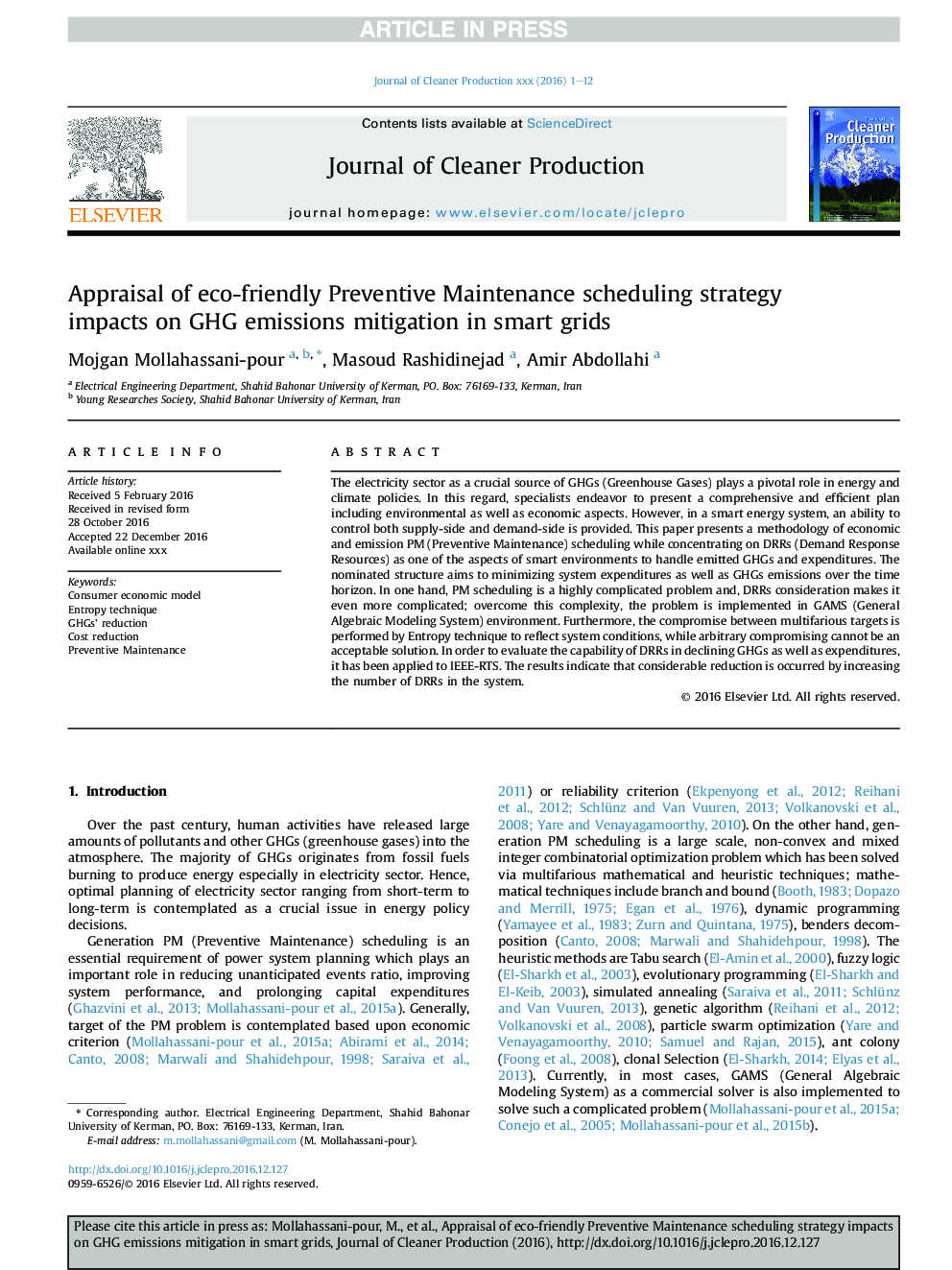| Article ID | Journal | Published Year | Pages | File Type |
|---|---|---|---|---|
| 5481073 | Journal of Cleaner Production | 2017 | 12 Pages |
Abstract
The electricity sector as a crucial source of GHGs (Greenhouse Gases) plays a pivotal role in energy and climate policies. In this regard, specialists endeavor to present a comprehensive and efficient plan including environmental as well as economic aspects. However, in a smart energy system, an ability to control both supply-side and demand-side is provided. This paper presents a methodology of economic and emission PM (Preventive Maintenance) scheduling while concentrating on DRRs (Demand Response Resources) as one of the aspects of smart environments to handle emitted GHGs and expenditures. The nominated structure aims to minimizing system expenditures as well as GHGs emissions over the time horizon. In one hand, PM scheduling is a highly complicated problem and, DRRs consideration makes it even more complicated; overcome this complexity, the problem is implemented in GAMS (General Algebraic Modeling System) environment. Furthermore, the compromise between multifarious targets is performed by Entropy technique to reflect system conditions, while arbitrary compromising cannot be an acceptable solution. In order to evaluate the capability of DRRs in declining GHGs as well as expenditures, it has been applied to IEEE-RTS. The results indicate that considerable reduction is occurred by increasing the number of DRRs in the system.
Keywords
Related Topics
Physical Sciences and Engineering
Energy
Renewable Energy, Sustainability and the Environment
Authors
Mojgan Mollahassani-pour, Masoud Rashidinejad, Amir Abdollahi,
